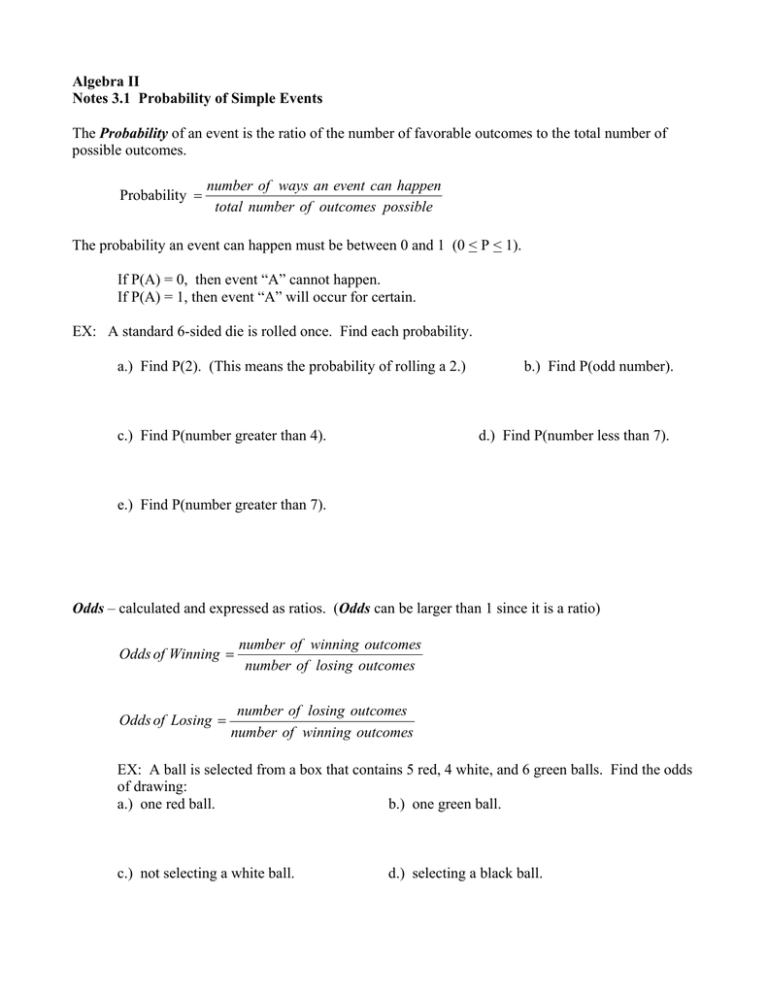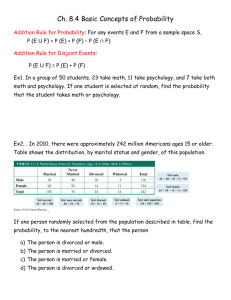Algebra II Notes 3.1 Probability of Simple Events Probability
advertisement

Algebra II Notes 3.1 Probability of Simple Events The Probability of an event is the ratio of the number of favorable outcomes to the total number of possible outcomes. Probability = number of ways an event can happen total number of outcomes possible The probability an event can happen must be between 0 and 1 (0 < P < 1). If P(A) = 0, then event “A” cannot happen. If P(A) = 1, then event “A” will occur for certain. EX: A standard 6-sided die is rolled once. Find each probability. a.) Find P(2). (This means the probability of rolling a 2.) c.) Find P(number greater than 4). b.) Find P(odd number). d.) Find P(number less than 7). e.) Find P(number greater than 7). Odds – calculated and expressed as ratios. (Odds can be larger than 1 since it is a ratio) Odds of Winning = Odds of Losing = number of winning outcomes number of losing outcomes number of losing outcomes number of winning outcomes EX: A ball is selected from a box that contains 5 red, 4 white, and 6 green balls. Find the odds of drawing: a.) one red ball. b.) one green ball. c.) not selecting a white ball. d.) selecting a black ball. You can also work backwards if given ODDS, you can find Probability. Ex: Find the probability of success if the ODDS of success are 5:9. 5 = # of success P(success) = 9 = # of losses. number of successes = number of total outcomes Notes 3.2 Probability of Compound Events Independent Event – the outcome of an event has no affect on the outcome of another event. Probability of Independent Events = P( A) ⋅ P( B) Dependent Event – the outcome of an event is affected by the outcome of a previous event. Probability of Dependent Events = P ( A) ⋅ P( B after A occurs) Ex: A die is rolled twice. Find each probability. a.) P(two odd numbers are rolled) = P(odd on first roll) · P(odd on second roll) b.) A jar contains 3 red gumballs, 5 green gumballs, and 6 orange gumballs. Find the probability that two green gumballs are chosen if no gumballs are replaced. Probability of Event A or Event B Occurring P(A or B) = P(A) + P(B) ← mutually exclusive events (no overlap in outcomes) EX: Find the probability of selecting a black card or a heart from a deck of 52 cards. P(A or B) = P(A) + P(B) – P(A and B) ← inclusive events (events that have overlap in outcomes.) EX: Find the probability of selecting a black card or a King from a deck of 52 cards.




